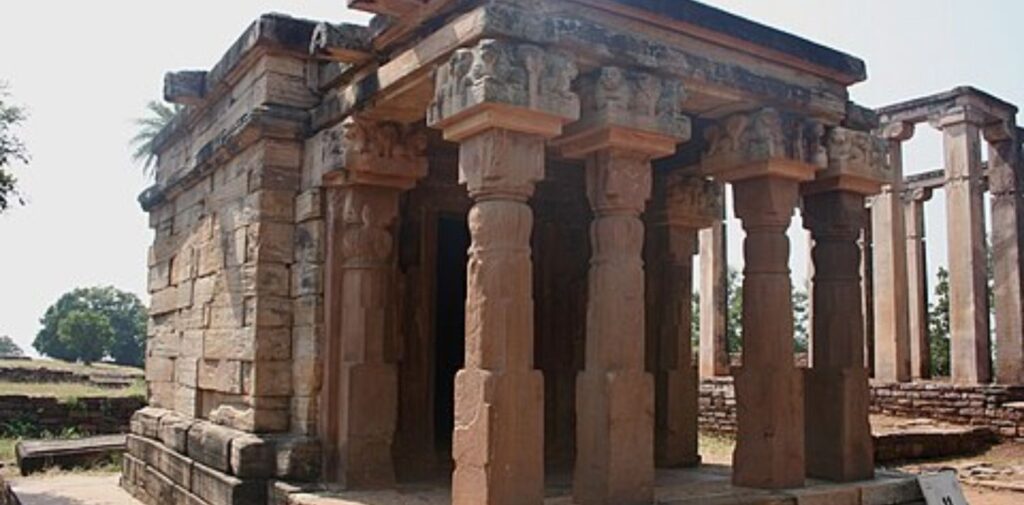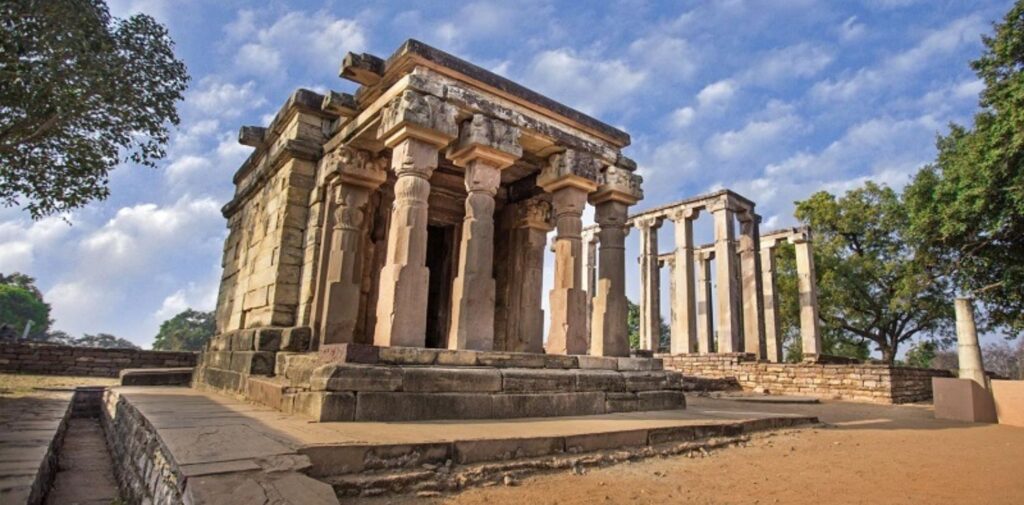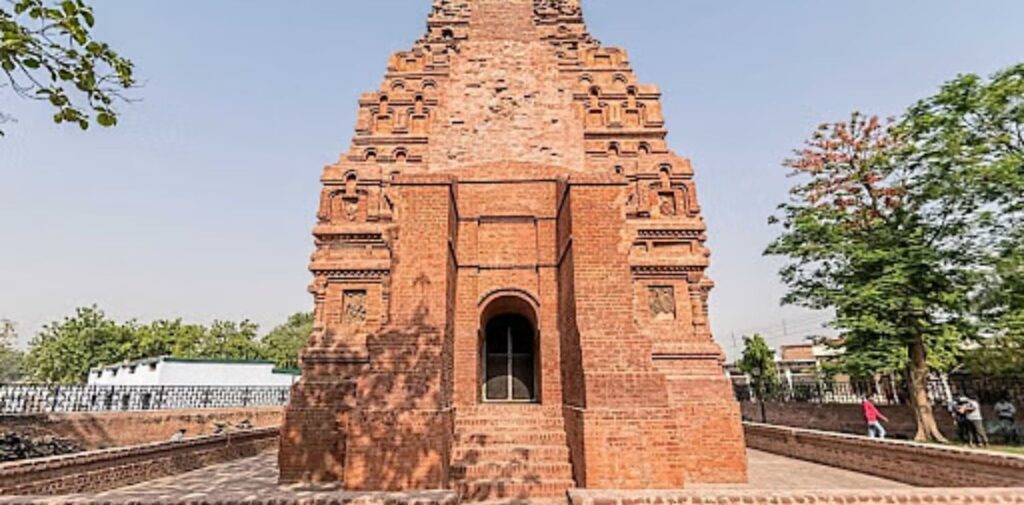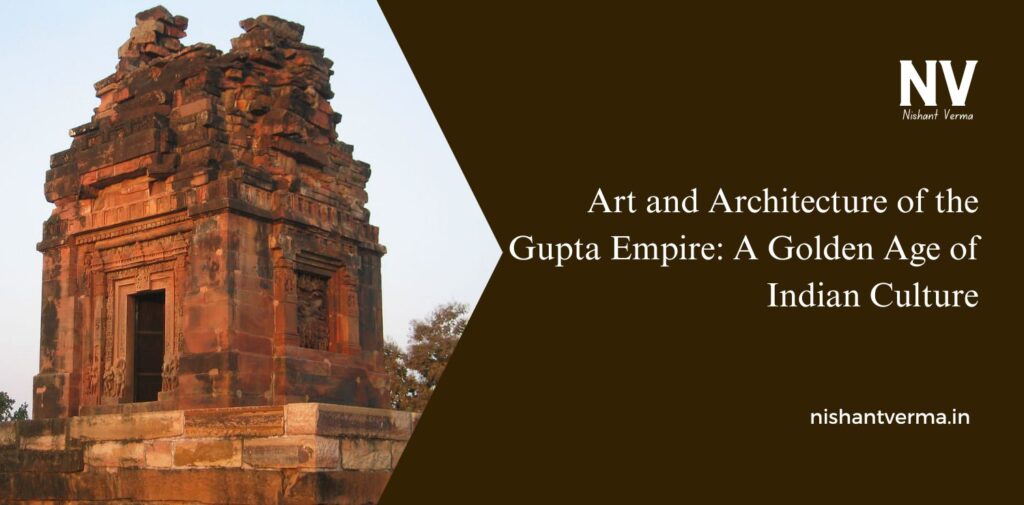India has a long and fascinating history filled with great civilizations, and one of the most significant periods in Indian history is the Gupta Empire. Known as the “Golden Age” of India, the Gupta Empire flourished from about 320 to 550 CE. During this time, India saw remarkable achievements in various fields, including art, architecture, science, mathematics, and literature. The Gupta period is often referred to as the Golden Age of Indian culture because of its rich contributions to the world.
In this article, we will explore the art and architecture of the Gupta Empire in a simple and easy-to-understand way. We will learn about the beautiful sculptures, paintings, temples, and structures that were created during this period and how they continue to inspire us today.
What Was the Gupta Empire?
The Gupta Empire was one of the most powerful and influential empires in ancient India. It was established by Chandragupta I around 320 CE, and it reached its peak under his successors, especially Samudragupta and Chandragupta II. The Gupta Empire was known for its strong governance, peace, and prosperity. The rulers of the Gupta Empire supported the arts and encouraged scholars, which led to a great cultural and intellectual growth during this period.
The Gupta Empire is remembered for many achievements, but today we will focus on the wonderful art and architecture that made it a golden age of Indian culture.

The Gupta Period: A Time of Peace and Prosperity
The Gupta Empire is called the “Golden Age” because it was a time of peace and prosperity. During this time, the empire was stable, and trade, agriculture, and learning flourished. Kings like Chandragupta II supported art, education, and religion, which allowed the culture to develop and grow.
This period also saw the rise of Hinduism and Buddhism, and both religions played important roles in shaping the art and architecture of the time. The Gupta rulers built beautiful temples and sponsored the creation of stunning sculptures and paintings. Artists and craftsmen received great support, and this helped in creating some of the most remarkable works of art in India’s history.
Gupta Art: Beauty in Sculpture and Painting
One of the greatest achievements of the Gupta Empire was the creation of beautiful sculptures. Gupta artists were known for their skill and attention to detail, and they created works that continue to be admired even today. Let’s look at some of the most important types of art from this period.
Sculptures of Gods and Goddesses
The Gupta period saw the creation of stunning sculptures of Hindu gods and goddesses. These sculptures were highly detailed and beautifully carved, showing the gods in peaceful and serene forms. The statue of Lord Vishnu and the statue of the Buddha are two examples of famous Gupta sculptures that are still admired for their grace and beauty.
Gupta sculptors paid attention to the details of the human body. They showed gods and goddesses with calm faces, elegant poses, and finely carved jewelry and clothes. These sculptures were often placed in temples, where people would worship and offer prayers to the gods.
Buddhist Art
During the Gupta period, Buddhism was also an important part of Indian culture. Many Gupta artists created beautiful works of art to represent Buddha and his teachings. Buddha statues from the Gupta period are known for their peaceful expressions and perfect proportions. These statues show the Buddha sitting in a meditative posture, with his hands in different gestures called mudras, which symbolize different aspects of life and spirituality.
One of the most famous Buddhist art pieces from the Gupta period is the Ajanta Caves in Maharashtra. These caves are filled with paintings and sculptures of Buddha and scenes from his life. The paintings inside these caves are incredibly detailed and show the life and teachings of Buddha in vibrant colors.
Gupta Paintings
Apart from sculptures, painting also flourished during the Gupta period. The Ajanta Caves are not only famous for their sculptures but also for their paintings. The walls of the caves are covered with beautiful frescoes (wall paintings) that depict stories from the life of Buddha, as well as scenes from daily life.
These paintings are remarkable for their rich colors, fine details, and the skill of the artists. They show the lives of royal families, the culture of the time, and the spiritual messages of Buddhism. The Gupta artists used natural pigments and a variety of techniques to create these stunning works of art.

Gupta Architecture: Temples, Stupas, and Pillars
Gupta architecture is also one of the highlights of this period. During the Gupta Empire, many beautiful temples, stupas, and pillars were built. These structures were not only places of worship but also symbols of the strength and creativity of Gupta rulers and their culture.
Temples
The Gupta rulers built many temples to honor the gods. These temples were usually made from stone and were decorated with intricate carvings. One of the most famous examples of Gupta temple architecture is the Dashavatara Temple at Deogarh. This temple, built during the Gupta period, is famous for its beautiful sculptures and carvings that show scenes from Hindu mythology.
Gupta temples were designed with great care. They often had large, open courtyards and towering spires called Shikhara that pointed to the sky. Inside, there was usually a statue of the god or goddess to whom the temple was dedicated. These temples were built to create a peaceful environment for worship and were adorned with carvings that told stories of gods and kings.
Stupas
In addition to temples, the Gupta period saw the construction of stupas. Stupas are dome-shaped structures that are used in Buddhist architecture. These stupas were built to house sacred relics and were often places of meditation and worship. The Sarnath Stupa is a well-known example of a stupa built during this time.
Stupas during the Gupta period were often made of stone and had beautifully carved reliefs and decorations. These structures were important for Buddhist communities, and they were built in places where people could come together to learn and meditate.
The Pillars of Ashoka
One of the most famous architectural achievements of the Gupta Empire was the creation of stone pillars. These pillars were often inscribed with important messages and were placed in different parts of the empire. The Pillars of Ashoka, which were built earlier during the Maurya Empire, continued to inspire Gupta rulers. The Gupta rulers used similar pillars, which were decorated with beautiful carvings of animals and gods.
The Iron Pillar of Delhi, which was built during the Gupta period, is a famous example of Gupta architecture. This pillar is made of iron and stands tall without rusting, which shows the advanced knowledge of metalworking during the Gupta period.

Gupta Architecture and Its Influence
The architecture of the Gupta period had a lasting impact on Indian culture. The designs of temples, stupas, and pillars influenced the architecture of later periods. Many of the styles developed during the Gupta Empire were used in the temples and buildings of later dynasties.
The detailed carvings and decorations from the Gupta period can still be seen in Indian temples and art today. The Gupta style of architecture continues to inspire architects and artists in modern India, showing the lasting legacy of this great civilization.
Conclusion – Art and Architecture of the Gupta Empire
The Gupta Empire was truly a Golden Age for Indian culture, especially in the fields of art and architecture. The Gupta rulers supported the creation of beautiful sculptures, paintings, and buildings that reflected the spiritual and cultural richness of the time. Whether it was the graceful Buddha statues in the Ajanta Caves, the magnificent temples dedicated to Hindu gods, or the towering stone pillars, the art and architecture of the Gupta Empire have left a lasting legacy.
The Gupta period is a reminder of how art and architecture can reflect the values and beliefs of a civilization. The beautiful works created during this time continue to inspire people around the world and remind us of the great achievements of ancient India.




